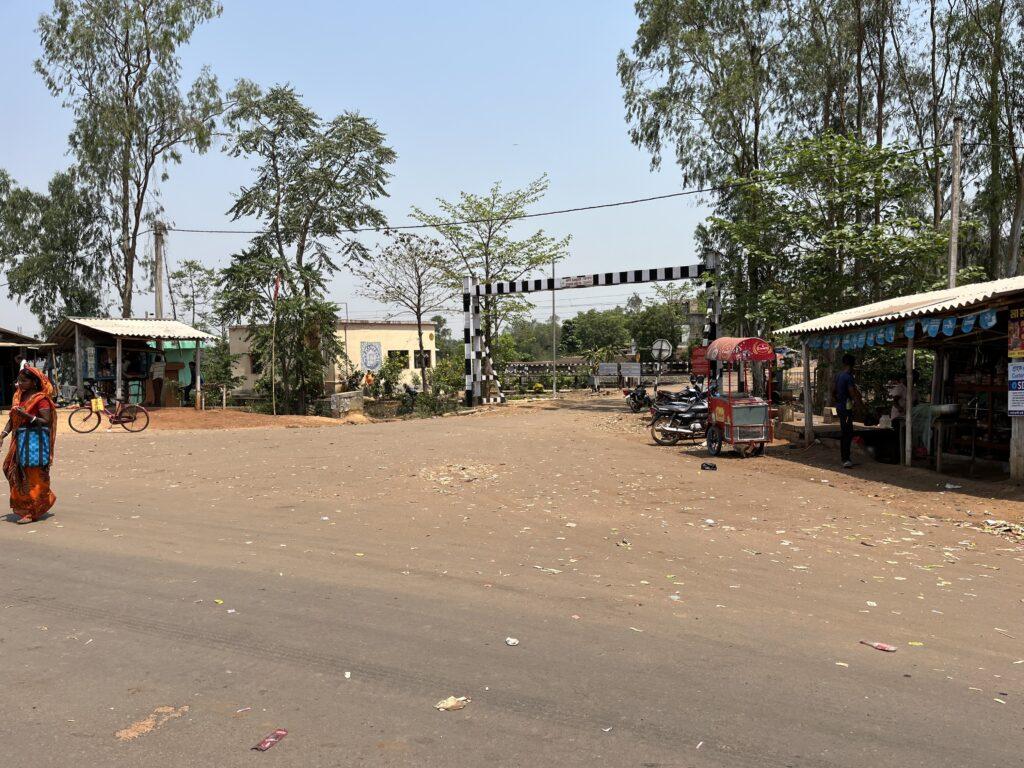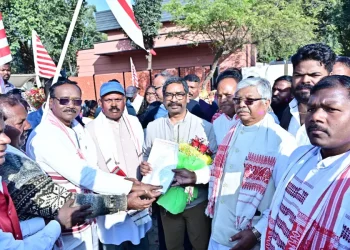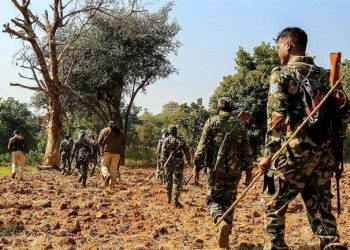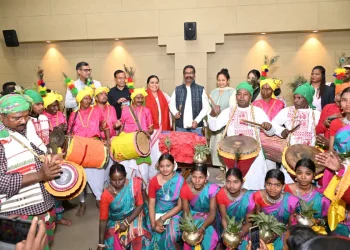Khemasuli & Lodhasuli
Tucked away from the hustle and bustle of the city, the Khemasuli railway station in West Midnapur district looks like any other small town railway station, except that it held centrestage of the Kurmi agitation not very long ago, one that affected over 500 express and passenger trains.
RPF personnel are still on vigil, a week after the blockade was lifted. Right on the National Highway (NH-6), concrete houses are too few in the nondescript hamlet. Mud houses with asbestos ceilings about half-a-kilometre away on either side of the station are the abode of Kurmis.
“Ours is a legitimate demand. The agitation may resume any day as the meeting of Kurmis with the Bengal Government (chief secretary) in Nabanna on April 12 over the ST status remained inconclusive,” Kurmi activist Subhash Mahto, a resident of one of the mud houses, told The Indian Tribal.
About 10km away from Khemasuli, Lodhasuli in Jhargram district of West Bengal houses the strategy hub of Kurmis. Brick homes, ramshackle bus stand, defunct tube wells speak volumes about underdevelopment of the area.

“We have been robbed of our tribal uniqueness after India’s Independence. Our culture, food habits and physique are identical to tribals. But the state and the central governments are yet to recognise us as a Scheduled Tribe,” Anoop Mahto, a leader of Kurmis, said at the Adivasi Kurmis’ office at the Lodhasuli bus stand.
Sweating under the tin roof of the office, Subhash said, “Kurmis were in the ST category in the Government of India Act, 1935. But somehow, we were excluded from the ST category post-Independence. We were included in the OBC category later. The Trinamool Congress-led Bengal government enlisted us in the B category of OBCs (Other Backward Castes), serving another jolt to Kurmis.”
There is a sizable population of Kurmis in Jhargram, West Midnapore, Bankura and Purulia districts of West Bengal. Bordering districts of neighbouring Jharkhand and Odisha also house several Kurmis.

“Kurmis’ food habit, culture and religious practices are identical to tribals. The Government of India Notification, 1913, and the Bihar & Orissa Gadget of 1931 included us in the tribal category. But we were excluded from the ST list in the notification of September 6, 1950. The Kurmis’ demand for inclusion in the ST category is growing stronger in Jharkhand and Odisha, besides West Bengal,” former MP and social activist Shailendra Mahto told The Indian Tribal.
But several sections of tribals are opposed to the inclusion of Kurmis in the ST category. “Kurmis are a landed sect. Their economic and social status are far better than Oraons, Santhals and Mundas. Their inclusion in the ST category will be genocide of ‘actual’ tribals. The governments of Bengal, Jharkhand and Odisha are playing vote bank politics over the Kurmis’ quota demand. All the three states have recommended giving ST status to Kurmis just for political gains,” claims former Mayurbhanj MP Salkhan Murmu.






















